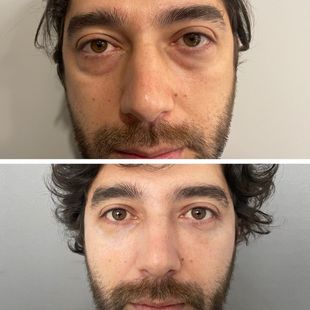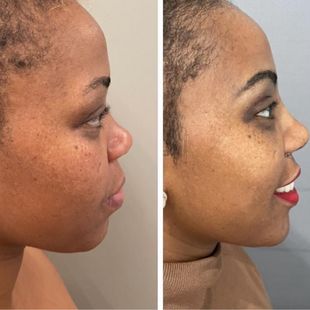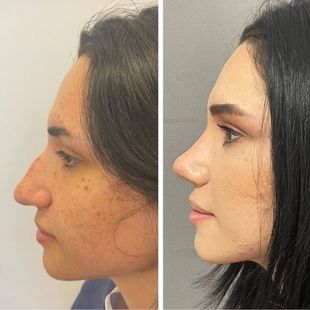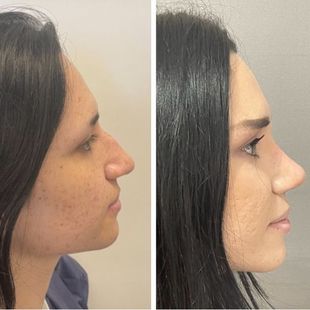Rhinoplasty: All That You Need to Know
Rhinoplasty, or more commonly the "nose job," is that form of surgical operation seeking to either change the shape or improve the function of the nose. This surgery is among the most in-demand cosmetic surgeries all over the world, and it serves both aesthetic desires and medical needs. With this detailed guide, learn about rhinoplasty, its different types, benefits, and risks; read about what one can expect before, during, and after such surgery.

History of Rhinoplasty
Rhinoplasty traces its roots back to ancient Egypt and India circa 3000 B.C. An Indian Ayurvedic physician named Sushruta recorded reconstructive surgery methods in the Sushruta Samhita. It was not until the 19th century that modern rhinoplasty began to take shape. Credit for the first modern closed rhinoplasty is given to an American otolaryngologist, Dr. John Orlando Roe, in 1887. With refined techniques and technologies of the 20th century, more diverse and accurate ways of reshaping noses were enabled.
2.550 £
Types of Rhinoplasty
Cosmetic Rhinoplasty
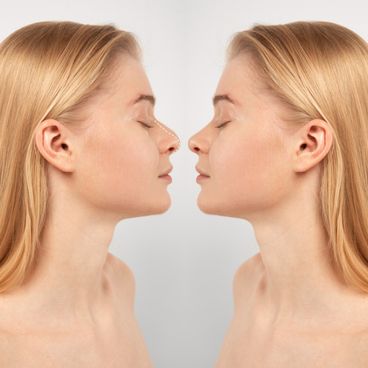
Primary Rhinoplasty
This surgery is made to modify the nose for aesthetic appearance. It is often done to decrease the size of the nose, change the shape of the nasal tip, lessen the width of the nostrils, or improve the angle between the nose and upper lip.
Revision (Secondary) Rhinoplasty
This is performed to correct or improve the result of a previous rhinoplasty. This operation is generally more difficult due to the existence of scar tissue and other changes from the initial surgery.
Functional Rhinoplasty
Septoplasty
This is done to correct the deviation in the nasal septum, which hampers breathing. The nasal septum is straightened in this operation to improve airflow.
Turbinate Reduction
This procedure works to shrink the size of enlarged turbinates that may block nasal airflow. The expected outcome of this procedure is smooth breathing.
Ethnic Rhinoplasty
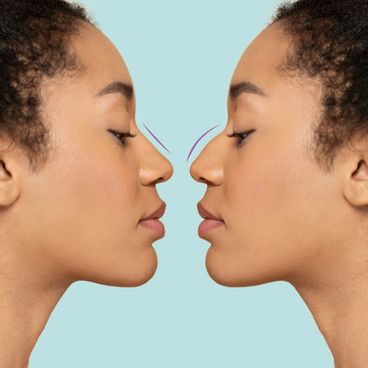
This refers to various ethnic rhinoplasty procedures tailored to preserve these unique features of different ethnic groups while achieving the desired aesthetic outcome. These surgeons take into consideration various anatomical differences in relation to cultural traits that provide a more natural look.
Surgical Techniques
Open Rhinoplasty
This is done by making an incision across the columella, which is that thin wall of tissue separating the two nostrils. This gives the surgeon good vision and access to the structures of the nose. It is thus usually indicated when more complicated cases occur where a lot of reshaping has to be done.
Closed Rhinoplasty
In this, all the incisions are given inside the nostrils, and therefore no scars are visible afterward. This is thus done for less major procedures and gives quicker recovery.
The choice between the two techniques depends on the complexity of the procedure and the surgeon's preference.
Reasons for Rhinoplasty
Cosmetic Reasons
- Harmonize Face: Reshaping size, shape, or proportions of the nose to create a more symmetrical and pleasing face.
- Asymmetry Correction: Congenitally or due to injury, reshaping for a more symmetrical look.
- Refine Nose Tip: A bulbous, droopy, or excessively upturned nose tip is modified to an individual's desired shape.
- Nostril Adjustment: This would include shrinking wide nostrils or correcting the shape of the nostrils.
Functional Reasons
- Improve Breathing: straightening out the structural problem – for example, a deviated septum or nasal valve collapse – that is obstructing the airflow.
- Repair Injury: sorting out nasal fractures or other external nasal deformities caused by injury.
- Resolve Congenital Issues: sorting out congenital abnormalities of the nose that affect its function or appearance.
Consultation and Preparation
Consultation
During the first consultation, the surgeon will:
- Discuss Goals: Understand the motive behind rhinoplasty and what exactly one is expecting after the procedure.
- Medical History: Go over previous surgeries, allergies, or any medical problems that may be represented in the anamnesis of the patient.
- Physical Examination: Detailed examination of the internal structures of the nose and of facial harmony in general.
- Photo graphs: for preoperative analysis and postoperative comparison, take photos of the nose from different angles.
- 3D Imaging: in selected cases, 3D imaging can be performed using software to simulate possible results and help the patient visualize the changes.
You are entitled to an initial on-line pre examination with your Wellcome Healthy Life Consultant.
Preparation
Preparation for rhinoplasty involves some measures to ensure safety and optimization of outcomes. These involve the following:
- Medical Evaluation: This includes necessary medical clearances and lab tests.
- Medication: Avoid taking medications, including supplements, which may add to the risk of bleeding, such as aspirin and anti-inflammatory drugs.
- Smoking: Do not smoke since this may impede the process of healing.
- Instructions: This encompasses fasting, and also preoperative instructions concerning medications on the day of surgery.
Choosing a Surgeon
Selecting a qualified and experienced surgeon is crucial for achieving desired results and minimizing risks. Consider the following factors:
- Board Certification: Doctor should be board-certified in plastic surgery or facial plastic surgery.
- Experience: There is lots of experience on the part of the surgeon operating on rhinoplasty.
- Before-and-After Photos: These should be studied to have an idea of the surgeon's work.
- Patient Reviews: Review the feedback and testimonials of previous patients. Comfort Level: Call a surgeon in whom you feel comfortable discussing your goals and concerns.
The Rhinoplasty Procedure
Anesthesia
Rhinoplasty may be performed with either local anesthesia with sedation or general anesthesia, depending on the complexity of the surgery as well as the preference of the patient.
Surgical Steps
- Incisions: The surgeon makes the necessary incision based on whether the method is open or closed.
- Reshaping the Nose: The cartilage and bone are meticulously reshaped. There may be removal, addition, or rearrangement of tissue.
- Correcting Deviations: In the event of any functional issues, such as a deviated septum, these are corrected to improve breathing.
- Closing Incisions: Incisions are carefully closed with sutures. In open rhinoplasty, the external incision is stitching with fine sutures in order to reduce scar formation.
- Stabilizing the Nose: A splint is fitted to support its new shape during the initial phases of healing.
Duration
The duration of the surgery ranges from one to three hours depending on the complexity.
Conclusion
Conclusion
Rhinoplasty may be a life-changing surgery with regard to aesthetics and function. Types of rhinoplasty, the reasons for it, and what to expect in the phases of consultation, surgery, and recovery are important in decision-making. Proper selection of a skilled surgeon and adherence to pre- and postoperative care will give the patient the satisfaction of a result: an improved quality of life.
Rhinoplasty should be done with realistic expectations and understanding of the surgery, be it aesthetic, functional, or both.
Recovery Time
-
Immediate Postoperative PeriodFollowing surgery, the patient is cared for in a recovery area. Some swelling, bruising of the eyes, and congestion of the nose are commonly seen. Pain is usually tolerable with prescribed analgesia.
-
First WeekA nasal splint is applied along with possible nasal packing in order to support the new shape and control bleeding. Most patients can resume light activities within a week, but should avoid strenuous exercise and situations that risk nasal trauma.
-
Weeks 2-4Swelling and bruising start to subside. The sutures and splints are usually removed within two weeks. Patients can now gradually resume normal activity; however, heavy lifting and contact sports are to be avoided.
-
Months 2-6The nose continues to heal and refine itself. Significant swelling has cleared, though subtle refinement may continue for several months, as long as one year. It is at this time crucial to follow the post-operative instructions your surgeon has provided you, including coming in for follow-up visits for check-ups to assure recovery occurs without incident.
Frequently Asked Questions
How long does the recovery process take?
Will there be visible scars after rhinoplasty?
Are the results of rhinoplasty permanent?
Is rhinoplasty painful?
Can rhinoplasty correct breathing problems?
How should I sleep after rhinoplasty?
Can I wear glasses after rhinoplasty?
What age is appropriate for rhinoplasty?
How can I prepare for rhinoplasty?
-
Get Quality Treatments You can get an idea of the quality of the clinics & hospitals by reading verified customer reviews of their previous experience to make your decision with confidence
-
Gain Time Don't waste time checking recommendations from friends and other websites. Collect offers for your needs online and save time that you could spend with your loved ones.
-
Best-Matched Offers Get personalized offers by answering a few specific questions about your treatment needs. Quickly receive the best-matched offers from over 100 clinics and hospitals
-
Be Protected At every step of your journey, Wellcome preserves your experience. We'll have your back so you can get on with your work in peace.

